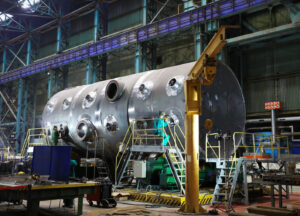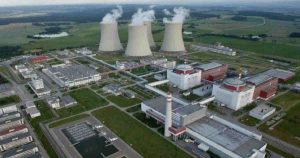New renewable generating capacity broke the 100GW barrier in 2014, equivalent to the entire fleet of nuclear power plants in the US, a UN report shows.
Global investment in renewable energy during 2014 increased by 17 per cent from 2013 levels to US$270bn (£183bn).
Investors have been attracted by the increasing cost effectiveness and low risk of the solar and wind sectors.
The analysis has been published by the UN Environment Programme (Unep) and Bloomberg New Energy Finance.Thinking big (and small)
“We have a continuation of what we have seen in previous years, which is a concentration of investment in two sectors – solar and wind,” explained Eric Usher, lead editor of the Global Trends in Renewable Energy Investment.
Mr Usher, head of the Unep Finance Initiative, said that both sectors had recorded a good year.
“Solar was up 29 per cent to US$150bn, while wind was up 11 per cent to almost US$100bn. The other sectors did less well, some are maturing but others have yet to mature.
“Technologically, solar is doing well at both small-scale (roof tops) and larger scale.
“The big story in wind, in developed economies – Europe particularly – is large-scale off-shore, which had a very good year receiving US$18.6bn in financing in Europe alone.”
The increase in investment was the first rise for three years after the global sector recorded a dip in investment levels during 2012 and 2013. The report said the commitments made in 2014 were just 3 per cent below the record level of financing in 2011.
Globally, renewables accounted for an estimated 9.1 per cent of the world’s electricity generation. The report calculated that this contributed to saving of 1.3 gigatonnes of CO2 emissions – about twice as much as emitted by the global airline industry – if the electricity had been generated from fossil fuels.
‘Indispensible’
Achim Steiner, Unep executive director, observed: “Once again in 2014, renewables made up nearly half of the net power capacity added worldwide.
“These climate-friendly energy technologies are now an indispensable component of the global energy mix and their importance will only increase as markets mature, technology prices continue to fall and the need to rein in carbon emissions becomes ever more important.”
China was by fair the biggest investor, pumping a record US$83.3bn into the sector – up by more than a third on its 2013 financing.
The US was second, investing US$38.3bn. Japan was a close third with US$35.7bn.
Mr Usher told BBC News that innovation in the sector was being recorded around the globe, in developing nations as well as in the industrialised world.
“On the technology front, China has really scaled up, giving most countries and manufacturers a run for their money particularly when it comes to manufacturing solar and wind turbines,” he said.
“At the same time in Europe, because we are getting the penetration levels of 25 per cent or even higher in countries like Germany, Denmark and Spain, a lot of the innovations here relate to how you manage a grid with large-scale variable supply.
“So a lot of the technical innovations are coming from the grid operators.”
‘Exciting innovations’
Mr Usher added: “In North America, we see the financial sector doing some very exciting innovations. For example, they are bundling together tens of thousands of household-scale systems into financing structures that can get Wall Street bankers excited.”
He explained the financing packages were set up for the gas and renewables sector, but renewable projects were “pulling away” from gas projects.
“They are very low risk. Once you have set up a wind farm or solar system, the risks are actually much lower than running a gas plant because you do not have a pricing risk.
Therefore the cost of financing renewables has come down remarkably. Now projects can raise financing at very low cost and that leads to a lower end-use cost of electricity.”
Despite the return to growth in investment after a two-year dip, the report’s authors say that a number of challenges still factor the sector as a whole, despite the growing strength of the wind and solar industries.
One was the fall in the global price of oil. But Udo Steffens, president of the Frankfurt School of Finance and Management, was cautiously optimistic: “Oil and renewables do not directly compete for power investment dollars.
“Wind and solar sectors should be able to carry on flourishing, particularly if they continue to cut cost per MWh.”
Another challenge that the report highlighted as an area of concern was the “erosion of investor confidence” caused by increasing uncertainty surrounding government support for renewables projects.
Michael Liebreich, chairman of the advisory board for Bloomberg New Energy Finance, explained: “Europe was the first mover in clean energy but is still in a process of restructuring those early support mechanisms.
“In the UK and Germany, we are seeing a move away from feed-in tariffs and green certificates towards auctions and subsidy, which are aimed at capping the cost of the transition to consumers.” – BBC Report




